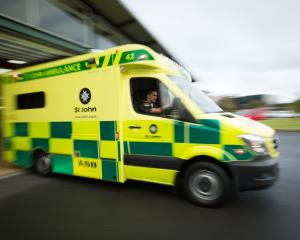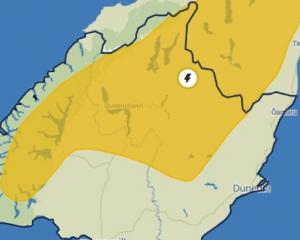
Beachgoers at Takapuna in Auckland are angry that there are not any signs warning people about a sewage spill.
The North Shore beach is subject to a temporary “no swim” warning after raw sewage flowed into the water, although Auckland Council can not order that the beach be closed.
It is one of a raft of Auckland beaches that are currently unsafe for swimming.
Lifeguards shut down Takapuna beach at 3.30pm yesterday, when a fault in the wastewater network caused a stormwater drain to overflow.
As a result, raw sewage flowed into the water between the red and yellow flags.
The flags were taken down and the beach was closed for swimming for the remainder of the day - with the water quality labelled “high risk”.
The Auckland SafeSwim website continues to regard the beach as high risk, saying there is an “elevated health risk due to poor water quality; temporary no-swim warning in effect”.
There were at least 30 people, mainly children, in the water when the Herald visited the beach just before midday today.
Tasigrace Pace (18) from Otahuhu, said her family found out about the sewage issue after the children had gone in to swim.
“If the kids get sick or anything, then we will definitely take it up with Council,” Pace said.
Priya Rajagopalan, a visitor from the United States, said her family was told by an elderly couple about the risk.
Rajagopalan, a mother of two children aged 4 and 14, said the family had originally planned to spend half a day at the beach.
“The kids have been terribly disappointed, why are there no signs telling us about what happened or warning about the risks?” Rajagopalan said.
Local resident Albert Tong said lifeguards were asking people to get out of the water yesterday afternoon. But things were back to normal this morning.
“I assumed everything has been resolved,” Tong said.
The specific cause of the outflow remained unclear, but there had been some longer-term issues at the catchment, Safeswim technical lead Martin Neale said.
Watercare staff had made interventions by re-lining pipes, “but there is still something coming from somewhere, and it’s quite tricky to track these types of issues down in urban catchments”.
Surf lifesavers had acted fast when they saw the sewage and quickly got people out of the water, with no reports of harm to swimmers.
“Safeswim is now in a formal partnership with Surf Life Saving New Zealand, so we’ve been giving them lots of advice around how to manage water quality incidents at their beaches when they are controlling,” Neale said.
“The lifeguards are still on the beach and are actively patrolling it and monitoring the situation.”
It wasn’t clear for how much longer the no-swim warning would be in effect.
“From the reports I’ve received, the discharges stopped last night, but obviously there’s more rain forecast over the next couple of days, so we’ll keep a very close eye on it.”
The Auckland Council Safeswim website regularly reported test results at coastal swimming spots for enterococci bacteria.
The bacteria indicates the presence of faecal matter when it occurs in high levels. It could cause stomach illnesses, skin, eye and ear infections.
Takapuna was one of a raft of Auckland beaches that are currently unsafe for swimming.
The website provides water quality forecasts and information about health and safety risks 84 beaches.
It lists a number of beaches around the area including other popular North Shore beaches and others on Waiheke Island as being unsafe due to poor water quality.
Takapuna is listed as a “high risk” beach with “elevated health risk due to poor water quality”.
The risk is said to be lower this evening and tomorrow morning, but remains high at all other times.
For more information visit www.safeswim.org.nz.












